
Co-designing Our Regenerative Future: An Unconference on Agriculture and Beyond took place on October 29, 2016 and brought together people from around the country who are passionate about regenerative agriculture and regenerative concepts, including farmers, policy-makers, scientists and storytellers. The one-day, face-to-face event was catalyzed by Arlington Green and RASA, the Regenerative Agriculture Sector Accelerator. It was co-hosted by George Mason University, Regeneration International, Center for Sustainability Solutions, a project of Green America, and Biodiversity for a Liveable Planet.
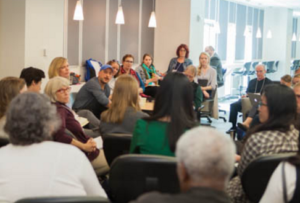
With over 85 attendees, the unconference format allowed participants to discuss topics of their choosing in hour long break-out sessions over the course of the day. There were 24 official sessions and many other conversations. For notes from the sessions, please look at the tabs sorted by category:
On the subject of policy, sessions were held on agricultural economic regulation, climate policy and food, the economic challenges of regenerative farmers, access to private investment for regenerative enterprises, public-private partnerships and connecting local and global food systems.
On the subject of agronomy, sessions were held on carbon sequestration, vertical agriculture, forest-based agriculture, permaculture and plant breeding, agricultural landscaping, the nexus of soil ecology and nutrition, eco-villages and transitioning to organic farming.
On the subject of outreach, sessions were held on the mainstream press, congress, consumers, regenerative storytelling, entrepreneurship, outreach to high profile players (such as Al Gore, Nate Klein and Bill McKibben) and making agriculture sexy again.
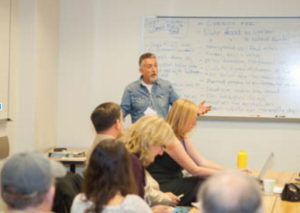
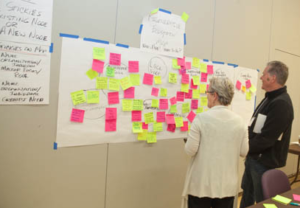
This event also served as a tool for actors across the varied regenerative sector to network and find partners for their projects. Participants put together a wall of notes with their organizations, areas of interest and expertise.
One of the most frequent responses to the event was that participants were surprised and inspired by how diverse the attendees were. An important part of the unconference format is self selection; organizers stressed that “those who choose to show up are the right people”. One participant described the event as:
“a unique platform to organize and coalesce action across stakeholder groups… Having this cross-section at the same table has the potential for huge impact in accelerating change.”
The advantages of the unconference were centered around the free exchange of ideas. Afterwards, attendees called for a continuation of the collective energy and sharing of information that made this event a success-so don’t hesitate to reach out to RASA or Arlington Green and get involved with the next one.
Special thanks go out to Dave Witzel and Agustin Cruz for organizing this event, as well as Mom’s Organic Market and Honest Tea for providing lunch and refreshments. Also thanks to all volunteers and those who helped with the planning process.
For more details, please visit (and comment) on the event synthesis document.
Addendum (4/24/17): During the Unconference participants were asked to write themselves a letter from one year in the future. We collected this letters and just mailed them back to their authors. We also posted copies for you to browse.
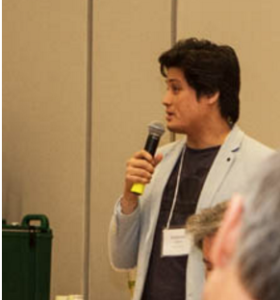
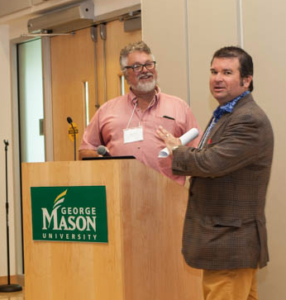
Break-Out Session on Policy Notes: (led by Mike Tidwell)
Some of the organizations in the room were:
- Chesapeake Center for Regenerative Ag
- DC Net Impact
- Ashoka, Nourish to the Nth (Bill Carter)
- Climate Stewards of Annapolis
- Biodiversity for a Livable Climate (Phillip, Tod)
- CCM Energy (Alla Jezmir)
- Susan Frick Payne Program Coordinator, Ecosystem Markets, Maryland Department of Agriculture, susan.payne@maryland.gov 410-841-5897
- Dave Warren
- Karen Stark, GMO Free PA
- Chase
- A Fraisse https://www.pyxeraglobal.org/
- Wendy Howard, Green Wheaton
- Betsy Nicholas, Waterkeepers Chesapeake
Some policy tools for regenerative agriculture:
- 4p1000.org
- Rating food by emissions/carbon sequestration/water use/efficient irrigation/fossil fuel use (nutrient density is a strong proxy, what Dan Kittredge is doing)
- Carbon credits – traditional forest management, traditional food system, native americans, nutrient dense, high-nutrient food (Bill from Ashoka)
- Quantify ppm carbon in the live-cycle of a product; find how much is sequestered by certain practices on certain lands. 3-10 tons per acre sequestered through holistic management to measure carbon change on the farm. (Mike Snow, Willows Ford Farm)
- Tax Relief – rewarding reducing pollution
- Montana – incentive to cover bare ground
- Diverting REGI funds to regenerative ag farmers and pay for best practices, like the Maryland Healthy Soils Initiative
- Flush Tax – Chesapeake Bay Restoration Fund, creates funding for cover-cropping, 570,000 acres of cover crops, capability up to 1 million
- New Group – The Healthy Soils Consortium (Contact Susan Frick Payne, contact info above)
- Restaurant Rating System, Intelligent Nutrition Communities (Bill of Ashoka), because nutrient density is connected to health
- CCM Energy – Frontier technologies for agriculture created by ag tech companies, reducing input use (drones, etc.)
- Change neighborhood policies that prevent regenerative lawn care
- Pricing Carbon:
- This would address energy intensity of unsustainable agriculture, get to the 57% of global GHGs that the food system is responsible for, and increase the price of energy-intensive foods which would drive consumption toward local and regenerative ag.
- Human health costs should be part of the cost of degenerative ag, not animal agriculture–that’s the problem. Grazing can be regenerative since the energy intensity of meat comes from the feed: GMO corn that’s fertilized with fossil fuel-based synthetics.
- The price of meat is unnaturally low because of cheap carbon, big ag has stifled the “free-market” and kept the price paid to farmers artificially low.
- How do you make this tax actually hurt the Big Ag polluters? The bill would have to put money in low-income consumers’ pockets and compensate people who are the most vulnerable. With a rebate for everyone, carbon price will reform food policy, food will be more local and sustainable, farmers will be rewarded for using less fossil-fuel intensive inputs.
- Chris Van Hollen, next U.S. Senator of Maryland has a proposal to do this nationally, it’s a blanket rebate to all the voters, doesn’t direct funds to any special interest, every family member, it goes to every U.S. citizen with a SSN. In DC the idea is to have a carbon refund check for every resident, you don’t have to be documented (like Alaska’s rebate check).
- What about regulatory command instead of market-based solutions? That might be better, but it’s not politically achievable and it’s not either/or, we can price carbon and work for regulation to phase out fossil fuel use.
- Chis Van Hollen’s bill doesn’t allow for any exemptions, so big ag wouldn’t get an exemption, no special interests would get a kick-back, every citizen of the U.S. would get the universal carbon check, that equalizes everything. How do you win this when Congress has been bought by the corporations and care only for their profits?
- Farm Bill – instead of crop insurance, pay farmers for carbon sequestration.
- Section 115 in the Clean Air Act -rules to comply with international trade agreements to put additional regulations on the fossil fuel industry.
How do we convince legislators?
- Citizens Climate Lobby
- Don Byer is going to introduce a fee and dividend bill in the House. States have to move first but when the checks start being given out, people will have a stake in this.
Break-Out Session on Building a Connected Local & Global Food System Notes:
- USDA germ plasm sends seeds for research projects.
- Build large scale collaboration in open source plant breeding.
- Customer investment model?
- Creating community around the farmers.
Break-Out Session on Alternative Currencies/Economies Notes: (led by Marilyn B)
The people in the room:
- Marilyn B (Facilitator)
- Bill Carter (Ashoka)
- Raines Cohen
- Cheng
- Mark
- Jim Schulman
- Joan Mcintyre
- Chris Mapondera
- Gwendolyn Hallsmith: Headwaters Learning Facility (Cabot, VT)
- Viking Economics: George Lakey
- Judy Wicks: BALLE
How do we define Money? As an agreement and an exchange tool.
Alternative Currencies:
- Time banking
- Points systems
- BerkShares: Local currency, 400 businesses, 13 banks are exchange stations
- Bitcoin – used for human trafficking. Dark sides.
- Arkansas: AR Bucks local reserve notes, partnership w/state. mix of Federal reserve notes, silver, gold, local RE mortgages.
- North Dakota only state-owned bank so far.
- Maybe in Vermont soon
- Public Banking, alternative currencies. We’ve monocropped our money.
- BayBucks: Raines Cohen participates, used it to subscribe to “Community-Supported Chocolate” from Endorfin
- Paris: proposed new currency Indigo value to pay for good works – funds not available. National/global levels next.
- Schumaker College (UK) – Small is Beautiful, Buddhist Economics
- Transition Town: Permaculture (Bill Mollison) incorporated into UK model – now a US network as well. Media, PA.
- Time Banking – tax dollars sought by governments. Local systems used less over time because less necessary with facetime, relationship.
- Baltimore Currency: Jim Schulman created. Paul Glover says easier in neighborhood than metro area. Relies on trust.
- Ithaca Hours – rebooting?
Book Recommendation: No More Throwaway People (Edgar Cahn, time banks movement founder)
Problems with the Current System:
- Women and caregivers are not given monetary value.
- Automation is taking away jobs
- Can we get more leisure, not more work?
One Solution: Universal Basic Income:
- Combine with Land Value Tax to prevent inflation
- Capitalism: takes all our time to earn money – how can we transition?
- Slow Money
- Next System Project – Gar Alperowitz. If not capitalism/socialism, then what?
How do we measure economics? All about growth, profit, market share vs steady-state.
Gross National Happiness and other measures constitute human welfare.
Break-out session on Agricultural Economic Regulation Notes: (led by Jessica Wallach)
Other people in the room: Mark Frieden and Tod Wickersham
Food Policy Subsidies and Regulations:
- Subsidies determine incentives for farmers and can mask the true price of food. Cheap food (subsidized corn, wheat and soy) leads to heart disease and obesity. Deregulation of pricing for commodities such as corn, wheat and soy creates an abundance of products and cheap food.
- Subsidies are distorting the market and free trade. Free trade versus fair trade. Land used for agriculture was taken from natives.
- Lose-lose situation: market distortion reduces efficiencies, raises health care costs for consumers and lowers farmer incomes.
- Farm Bill – Union of Concerned Scientists is working on reforming it.
Instead of removing subsidies, you have to consider farmers and consumers. Big Ag has too much political power. Some ideas for reforming subsidies without hurting farmers:
- Other ways to manage farmers’ risk like weather insurance, pensions. Diversify commodity subsidies to incentivize farmers to grow a wider range of crops.
- If you grow your crop in a way that’s not recognized by the government, you can’t get insurance. This is enforced by agriculture committees on Capitol Hill led by Midwestern representatives. There needs to be more flexibility in subsidy allowance so that farmers can branch out and use regenerative methods without losing benefits like subsidized insurance or commodity subsidies.
- One possible solution is to tax unhealthy foods, but recent historical precedence says that there is too much pushback, eg soda taxes in New York under Mayor Bloomberg.
- There’s also a soda tax in Oakland, CA but it is only approved in parts of the state. It’s opposers are crying nanny state. There must also be consideration into what that kind of tax pays for-preferably public health interventions.
Regulations and subsidies also affect access to food in low-income or urban areas. There is hope for positive change in new farm-to-school programs. However, there is also a cultural component: in order for new generations to understand where their food comes from and care about agriculture, there needs to be funding for schools to teach nutrition and food systems.
- School lunches are cheap, and it’s almost impossible to provide fresh produce and stay within budget. In order for healthy school food to be feasible everywhere price deflation of unhealthy foods must change–costs of produce must be in line with corn wheat and soy.
- Corn subsidies affect meat prices. Links to healthcare and climate issues. If you care about environmental and public health consequences of your meat, you must delve deeply into where it comes from. “Green-washing” and misleading labeling is a big issue. Where do you intervene for affecting the price?
Possible solutions to price deflation:
- One possible solution to over-production causing price deflation is production caps on certain commodities. These could serve as incentives for growing other crops. It hurts farmer income when you produce too much.
- One possible solution is subsidies with the intent of managing farmer risk for diversifying their crops. Enforcing crop caps is difficult. Attention must also be paid to converting to regenerative and sustainable practices; diversifying makes ag more regenerative. Subsidies incentivize to mono-crop.
Another risk of diversifying into produce is that it is more perishable than corn, wheat and soy. A solution to this would be increased processing; such as drying and canning. Transportation is cheap and enables food to be shipped thousands of miles. Perishables can be kept for transport.
Another solution is to promote local produce. The Local Grocer is a great example of a successful local market in Falls Church.
However, there will always be a need for global agricultural trade. Commodities like sugar cane can only be grown in certain climates.
Domestic agricultural policies affect free trade. For poor countries in a global food system importing products under the cost of production ruins farmer livelihoods. Changing the ways we think about agricultural policy affects world policy.
Break-out Session on Climate Policy Notes:
Other agricultural systems:
- France has 4 parts per 1,000 of carbon in the soil.
- Traditional way of managing food for Native Americans recognized by government.
Possible solutions to climate issues:
- Organic standards that can be applied to food. Rating food on carbon produced or sequestered. Nutrient dense food grown in a carbon sequestered environment. Impact of transportation and logistics and use of water. Food miles.
- Montana incentivized covering bare ground. Ban antibiotics in agriculture. Incentivize regional-based agriculture. Subsidies for commodity crops. Diverting Regi funds to farmers, organic, regenerative. Healthy soils initiative. Flush tax in MD goes to healthy Chesapeake Bay. Restaurant ratings system, Ashoka in Europe. Intelligent nutrition community. rate from environment through the farmer. Reducing healthcare costs. Josh Marks – Inhabitat
- Have neighborhood associations allow homeowners to grow food in front lawns.
- Reduce meat eating. Price on carbon will help achieve all of this. EPA has a social cost of carbon, calculates asthma, sea level rise. Starts at $20/ton, goes up to $120/ton. DC likely to have vote on carbon tax. Chris Van Hollen carbon plan for U.S. Similar to Alaska permanent fund.
- Itemize carbon and ppm’s of carbon. What is being done to sequester carbon. Online tool for nutrient and sediment trading. Site specific, farm specific. Can also measure carbon. mdnutienttrading.com
Resources for advancing these solutions:
- Organic Consumers Association
- Food and Water Watch wants more regulations, not carbon taxes. Section 115 of the Clean Air Act. Copy local policy to go national.
- Bio nutrient Food Association: food spectrometer that measures nutrients.
- Nourishing schools food script.
- Petit chef network.
- Media Lab at MIT, Caleb Harper, Open Agriculture Network
- Vertical Farming Association: Adaptive procedures for climate change. Industrial ecology circular.
- Michael Locklear, uses organic compost, core and perlite. Done in a bag. Creates a nutrient dense food. Adds 72 minerals, kelp. Has a full nutrient range (minerals)
- Blue River Technologies, Bay Area. See and spray technology.
- Soil Arbitrage Farmland LP.
- Farm REIT.
- Maryland Farm and Harvest
- Maryland Public TV.
Break-Out Session on Farmland Commons Notes:
Who’s here?
- Nathan Kleinman
- Raines Cohen
- Brian Hicks (facilitator)
- Chase Ridgely
- Letty Shapiro
- Robert
- Gina Angiola
- Lynn Raskin
Good Sources of Information:
- http://bionutrient.org/
- http://www.fourseasonfarm.com/
- http://www.Fundrise.com/ (model for REITs with crowdfunding)
- Agrarian Trust
Sources of Funding:
- Self-directed IRA, managed by independent fiduciary
- Entrust
- Slow Money
- Gather Restaurant
- New Hope Farm
- Common Market – outside philly
What about state-based solutions: FarmLink, Land Link? They have depressing websites, less selection than they should have, or out of date info.
Farmworker housing:
- Tiny home solution – technically vehicles not homes.
- working to legalize tiny home (eco)villages
- Iroquois Valley
- Vermont: Cobb Hill Farm Ecovillage (cohousing)
- Singing Frog Farms (Sebastopol, CA)
- Willow Ford Farms (VA)
- Twin Oaks (spinning off Commonwealth Seeds 2 hours away) and Acorn (VA)
- Sustainable Economies Law Center (SELC, Oakland, CA) pioneering cooperativism study groups – ecosystem restoration and Permanent Real Estate Coops (PRECs).
- Weaver’s Way farm in Philly
- Wild & Radish (El Sobrante, CA) – Raines Cohen has invested “Slow Money” in this group.
- Dig Deep Farms (Hank Herrera, Contra Costa County)
- Schumaker – did first two CSAs in US as land trust. paperwork is online.
Break-Out Session on the Practical Adoption of Vertical Agriculture Notes:
Participants in the room:
- John Gaffigan, SunScience Corp. (johngaffigan@sunsciencecorp.com) and Corporate Property Services for NanoCote (www.iNanoCote.com) jgaffigan@cpropservices.com
- Audrey Morris, Friends of Urban Agriculture, Arlington agmorris1@yahoo.com
- Bill Brandon, energy consultant, private project to make indoor farming more energy efficient B_brandon@comcast.net
Session Notes:
- Abbreviations used:
- Vertical farming (VF) = Vertical Agriculture (VA) – indoor growing; often seen as urban-setting oriented
- University of District of Columbia (UDC), a land grant university
- Advantages of Vertical Farming:
- Individual ability to self-grow food, adaptation strategy for changes of climate change via controlled climate
- Enclosure of growing spaces as in VF – removes threats of insects, temperature, etc.
- Farm waste used as food stock and fuel source for vertical agriculture – heat, light. Byproduct is nutrients. Pelletized product to fuel lamps, etc. Michigan State University to use bio-waste for generating power and for nutrient source.
- VF – create many jobs, including for some for individuals otherwise difficult to employ
- VF can support more fragile economies in rural areas.
- Meeting challenges in areas where outdoor ag is not practical (too cold/hot/arid, lacking energy resources, etc.)
- Picking food unripe and ripened in boxcars not necessary if grow via VF regionally.
- Hydroponic food, not subject to air pollution exposure is another reason why VF / VA is viable.
- Reasons to support VF – Producing food in the face of climate change, depleted soil, reduces loss of nutrition from long distance transportation, longer-lasting food grown via controlled environment (e.g. greenhouses with natural light but controlled environment)
- Considerations for the Vertical Farmer:
- Restraint – concept of stasis/resistance to change; inertia by traditional growers to go to vertical farming vs. step of some farmland devoted to enclosed, vertical farming
- For the future – non GMO, organic are and will continue to be preferred by all demographic consumers.
- Organic-waste-powered vertical farming seen as a goal.
- Livestock-centric agriculture prices based in Chicago; adds dunnage for transportation. Industry needs to adapt to farm issues, e.g. animal waste. Integrate with process with utilization of waste, diversify product, if near urban markets diversity into fresh produce. Help preserve small farms.
- Dwarf plants are useful for VF due to the ability to stack them vertically.
- Achieving organic classification is a difficult thing in vertical setting. But sanitation of inputs not required for certification.
- Restraint in VF – white mold in particular, but all mold in general needs to be actively monitored.
- Advantage to adjust light spectrum by crop – research ongoing; “light recipes”
- Freight farms = freight containers repurposed for growing is an option, but they start at 80K.
- Effective radius – turnaround time to urban center from VF; definition of 250 miles suggested.
- How can we move VF forward?
- Advancement of VF is an area where cooperation is key so competitors can work to mutual advantage.
- Next Farm Bill – Cong. Marcy Kaptur of OH and Senator Debbie Stabenow of MI – should have provisions that address the advancement of vertical agriculture.
- International Symposium for Vertical Farming, June 2017, hopefully to be held in DC via UDC
- UDC has a focus in food hubs and outreach
Dick Vanden Heuvel’s Notes:
“I had the good fortune to receive a ride to the conference at the George Mason University in Arlington on October 29 with Michael Locklear, Researcher-Consultant at an organic farm in Easton. In our conversation, I learned about the research he had done on soil degeneration and his advocacy of adding minerals to the soil in addition to using organic farming practices to produce high quality food. While growing tomatoes in Florida, he used sea salt for minerals and neem oil, an organic insecticide and fungicide, to prevent the growth of fungi on his plants. No-till farming is essential to foster carbon sequestration in the soil. Controlled grazing that tramples grass residue into the soil is an ideal way to build humus in the soil to fix atmospheric carbon. This, along with deep-rooted prairie grass was why the Great Plains soil was so deep and rich when the buffalo roamed, leaving their excrement to add to the fertility. When we arrived at the conference, I found [those] who gave their presentation on sequestering carbon in the soil at our November 14 conference last year sponsored by our Annapolis Climate Stewards group – Sudheer Shukla, Philip Bogdonoff, [both of Biodiversity for a Livable Climate] and Chase Ridgely. Philip reported to me that,as a result of Delegate Dana Stein’s coming to our meeting, they were able to work with him on developing legislation dealing with [regenerative agriculture], although he was not sure of the final outcome as yet. Dana Stein is Vice Chairman of the Maryland House Environment and Transportation Committee.
Needless to say, a major topic of the George Mason University conference was sequestering carbon in the soil to reverse global warming. Michael Locklear was one of the leading advocates, giving this priority as the major way to reverse global warming quickly. Studies were cited that showed global warming could be reversed in as few as 10 years using only 3% of the world’s grasslands.* Another study predicted 15 years.* I expect to receive details of these studies from Michael. His approach in getting farmers to adopt methods that promote carbon sequestration is to convince them that their profits will double. Their costs of production would be greatly reduced and the quality of the food they produce would be greatly increased, increasing customer demand. They would not even have to be convinced that they are helping to save the planet.
Mike Tidwell led the session on policy changes needed to bring about needed change. Some of the ideas suggested are as follows: Carbon tax using DC as a pilot program – Rate food as to how much carbon it takes to produce it – Rate food on nutritional density – Food miles to produce it – Amount of water to produce it – Regionally based agriculture – Subsidies for cover crops – Eating good food reduces health care costs – Regulation through Clean Air Act – Change lawn laws to allow tall grass and vegetables. I will not attempt to summarize the entire conference except to say that it was attended by an enthusiastic group of people who are determined to bring about needed changes to save our planet. I will report on other information I receive related to the topic, including studies I receive from Michael Locklear.”
Break-Out Session on Outreach Notes:
Who was there?
- Martha Holdridge
- Sudheer Shukla
- Raines Cohen
- Janet Maalouf
- Doris Williams
- Dave Feldman
- Michael Reilly
- Danielle Tergis
Supply and Demand:
- How can we get beyond preaching to the choir?
- Dave: Center for Sustainability Solutions – part of Green America.
- Raines: regional & Global Ecovillage Network, ReGen Villages video gone viral.
Mike: How do people know where to go to eat to get regenerative food?
- Raines: I’ve done Slow Money investment in a farm-to-table restaurant (Gather in Berkeley, CA: they don’t just do checkbox “organic,” they profile each supplier and document food miles traveled and what each supplier is doing for the earth and their community).
- Within Reach movie: bike journey to 100 sustainable communities
- Green Ease : Eating Green Just Got Easy
- Consumers want more organic, non-GMO. The demand is really there. Hasn’t gotten into mainstream production channels yet.
- Martha Holdridge, Grass Power: 4 per 1000 French Initiative: demonstrate that agricultural soils can play a critical role in climate security. Increase soil carbon by 0.4% per year.
- FutureHarvestCASA: Chesapeake Alliance for Sustainable Agriculture. 800 members. Annual conference.
Strong arguments to get attention:
- Mark Miten (sp?) – 1000 eco farms (Bethesda, MD)
- Do you have to be organic to be regenerative? Practice vs. certification.
- Sudheer Shukla: Biodiversity for a Livable Climate. Restoring Ecosystems to Reverse Global Warming.
Break-Out Session on Storytelling Notes: (Led by Aldo Bello)
Richard Florida: Reshaping Neighborhoods w/the Creative Class
- We don’t think about the commons, common ground, community.
- Hero vs. she-ro:
- hero (male) and community-keeper (female)
- in after, farmers are almost always men. Women partners not acknowledged
- Farmers of color have the context of historical discrimination.
- We don’t need to use the term “climate change ” in this space. Terminology can be a mine field.
- Stop waiting for federal gov’t to be the hero (or monster).
- People who who work for Monsanto actually believe what we do & think they are on the verge of saving the earth.
- Landsat let’s us see 30+ years of seeing the whole globe.
How to redesign our messages to not simplify:
- We already have information overload!
- Documentaries: I am Tom Shediack, food waste
- Network-based power aided by stories. Can we use the network to tell our own stories?
- Human involvement in the ecosystem is necessary for the ecosystem to be healthy: better than leaving an ecosystem alone.
- WEF bright spots stories
- Reintegration of farmers into the community.
- Loess Plateau, soil cowboys, last child in the woods-Louv
Aldo Bello’s Notes on Storytelling:
We don’t know who is growing our food. Why don’t we know how that works? We are also dissociated from big media, they are telling the stories, but nobody really talking about them. Media is in it to make money, big ag too.
How do we tell better stories?
We have been telling ourselves a story with a hero at the center. White male warrior, young, from the past (dead). We needed that story because we were fighting dragons, hero goes out on a quest, could result in death and suffering, and saves the community, gets accolades. Usually brings something back of value.
- Modern stories, just kill the bad guy and everyone goes home.
- The hero doesn’t maintain the community – he’s gone. Can the heroine be the one maintaining the community?
So many stories on male farmers, the wife gets a cameo, but is not the story. How do we highlight the females, along with men, so women can see themselves in those positions. Same is true for African Americans-people of color- like the book “The color of food”.
Telling these stories are really tough, you have the believers in Climate change and those that don’t. That trigger word closes things off. People take sides instantly to resist exchange of any more information.
- But the things that are not climate change words but is language that people can relate to can work. Rain, storm intensity, freeze out (Maine!)
We are addicted to conflict. It moves drama. We need evil, good and bad. Those stories work. Move the dramatic forward.can we present challenges that move the story forward?
- Words are powerful and we use them so casually that their meaning has been diluted. Can we get to where the solution is the end point, rather than the conflict. Can it be celebrations? Talking about the wonderful things? Tired of the downers.
- Huge battles over words and concepts – GMOs
Concept of the other is central to conflict. We demonize farmers often, they are doing it wrong. (using chemicals, hurting animals etc.) But consumers and food waste are the bigger problem
Seen much greater success in conflict than cooperation. How do you do stories that honor cooperation and collaboration.
- Tribal stories are starting to gain holding, but hard to tell long term stories (climate change, regeneration)
- The Atlantic magazine story a few years ago (James Fallows traveling around), found that the problem was the external (government, etc.) and the community is the way to fix it on their own -Feds are not the hero.
But fed ag subsidies are a big problem, and hard to fix locally.
But how do we see ourselves as part of an ecosystem?
- Easily demonize people and companies -e.g. Monsanto wants to make people unhealthy but really many people there want to feed people
- Now we have perspectives we never had such as Landsat for 32 years. We can see the changes. We have come a long way. We all benefitted from nutrition based on monoculture. Now we see better, more perspective so we can change the story
- But also tired of the silver bullet story, that simplifies and perverts the story. So you simplify and then either the story is too weak or repels people. simple silver bullet stories can be easily undermined, one flaw and they are toast
How do you tell complicated stories?
- There are many good documentaries about food issues, but the people that watch them already know about those stories. How do you expand the telling of the stories to others. Can post on social media. We live in a nested networks of people and communities. We each have power, in our network and stories.
- There is an emerging stories that where the ecosystem is healthy and people are part of the ecosystem and the people in it, who have role, who intervene in that ecosystem are part of what makes it a healthy ecosystem. “Bright Spots” in World Economic Forum. Different than the story that we were in perfection and ruined it. That old story separates human and nature, wherever people are located nature is corrupted.
- We have had this concept of conquering nature rather than interdependency. Not us them, us us. Lao Tzu said, “Human and nature are one” do not take people out of the landscape.
How do we reintegrate food production, farmers into communities, life as we see it, rather than farmers way outside?
- How do we use the power of storytelling to bring us all together rather than stories for the choir. How do tell story to “the other”?
- We still think of ourselves as stewards – outside of nature – rather than part of nature. Also have to think of us all as producers rather than consumers. Any time you say silver bullet, “bullet” clues you this is a bad idea. The stories that are being told are much simpler than the solutions we hear in campaigns and media. The story is evolving. And there are lots of counter stories: “Barkskins” by Annie Proulx).

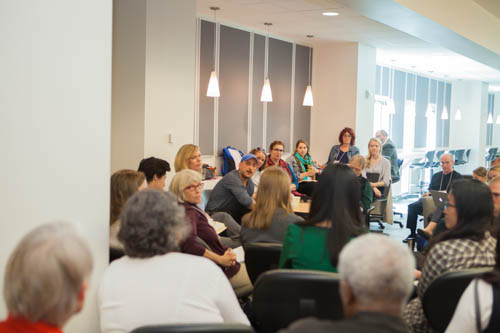
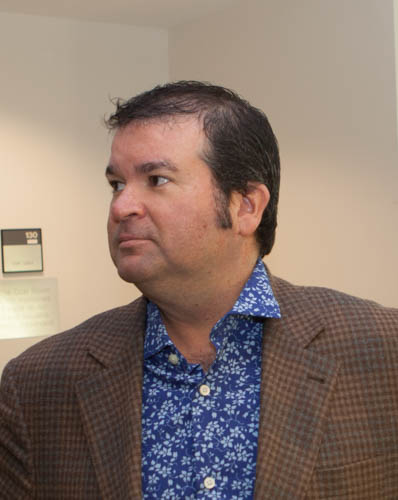
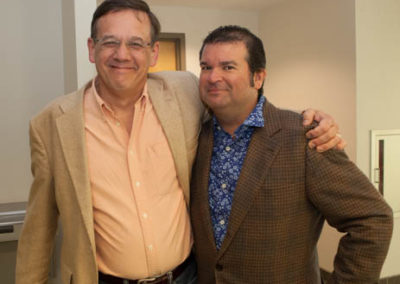
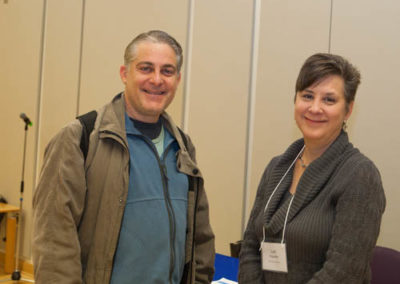
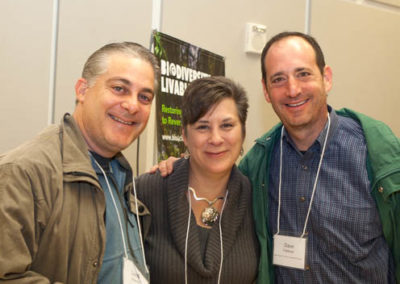
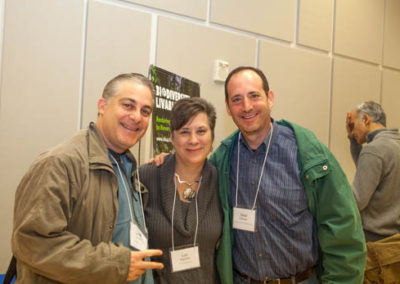
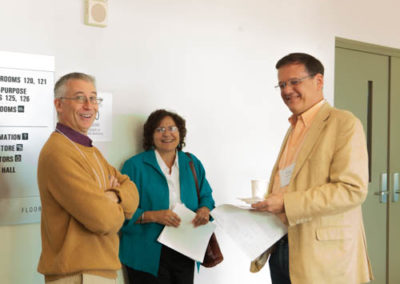
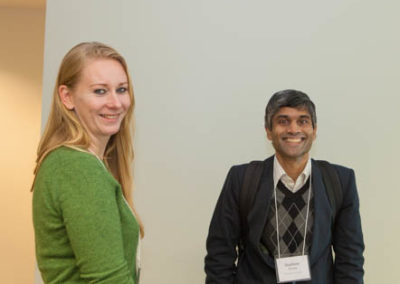
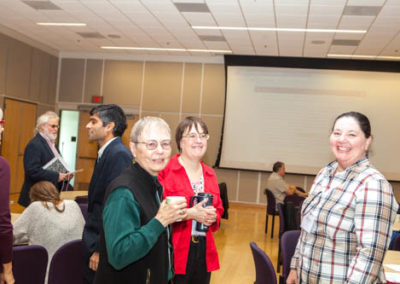
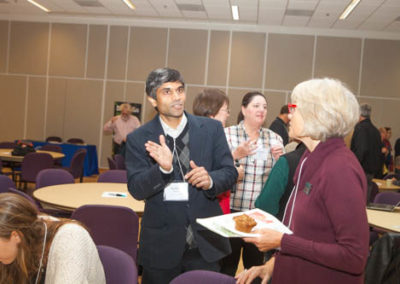
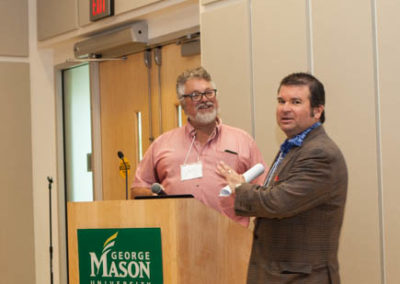
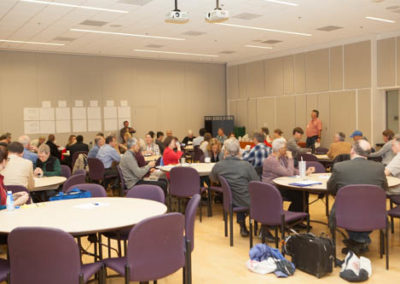
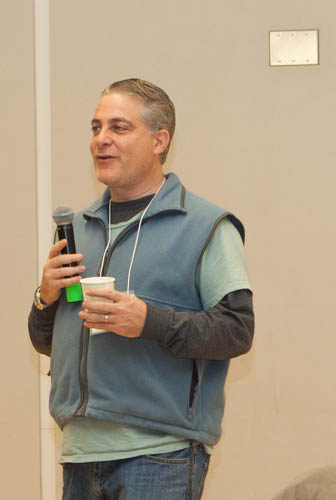
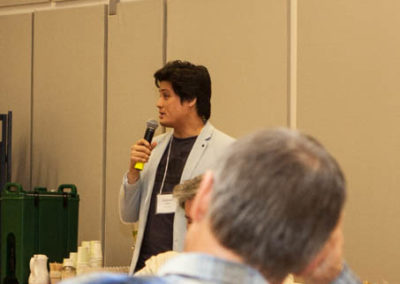
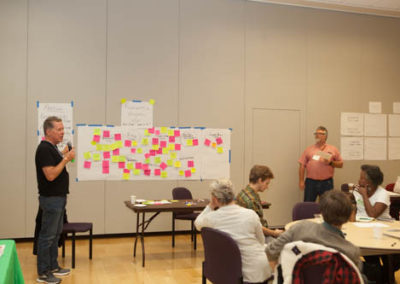

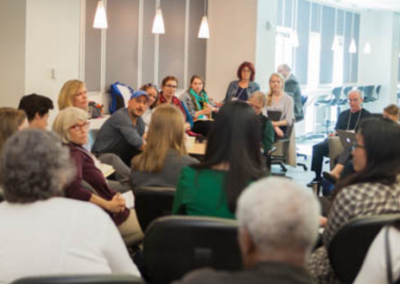
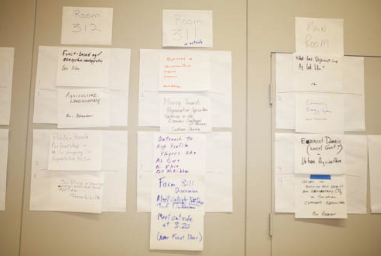
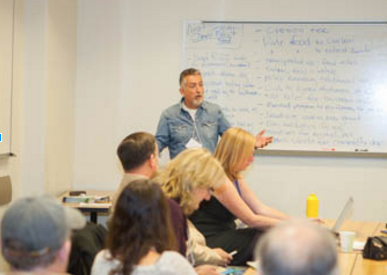
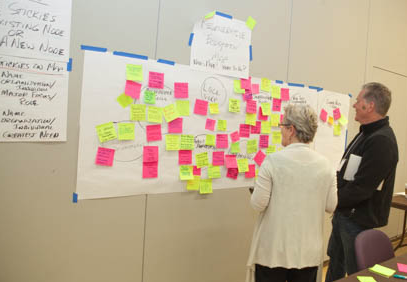

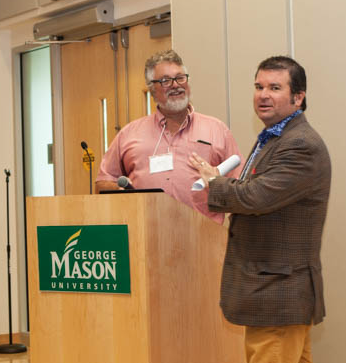
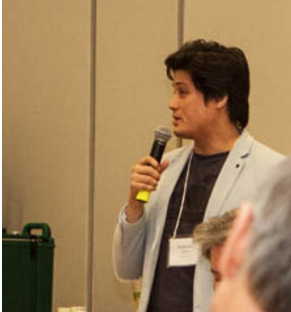
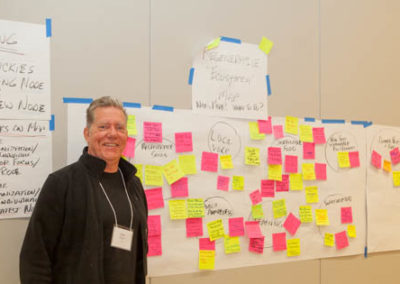
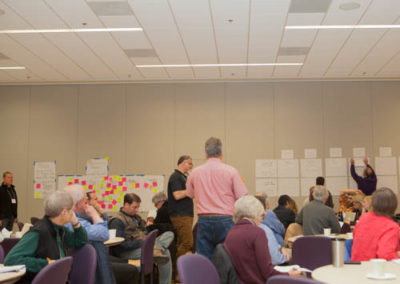
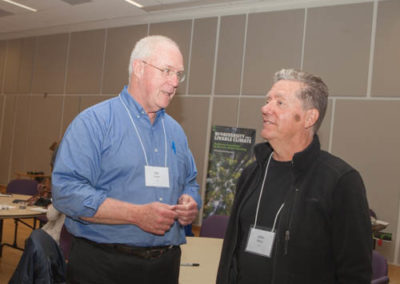
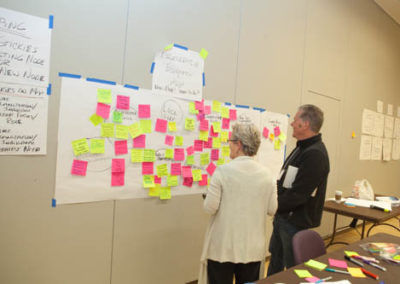
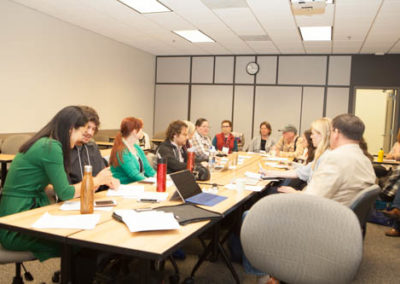
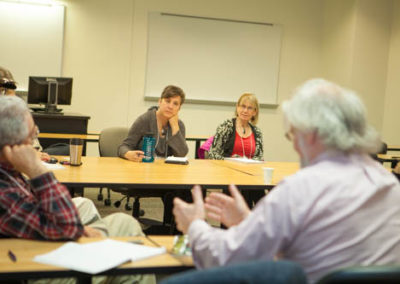
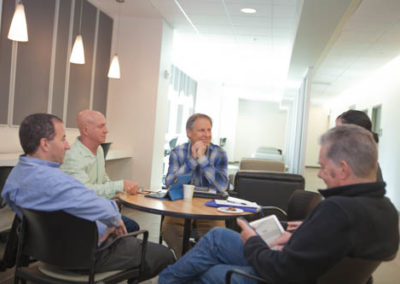
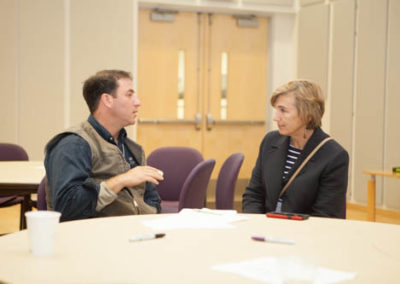
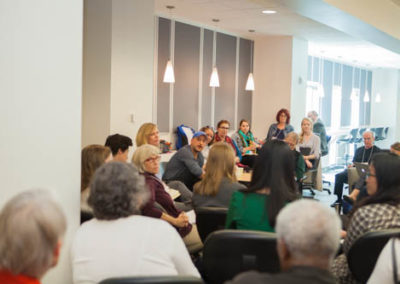
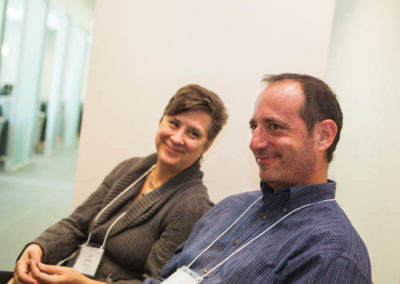
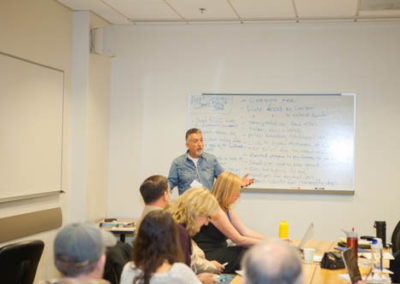
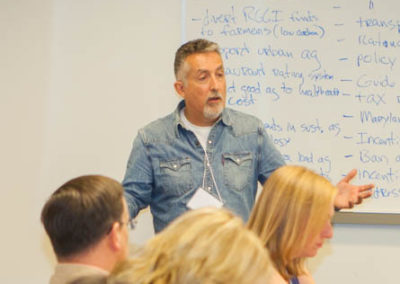
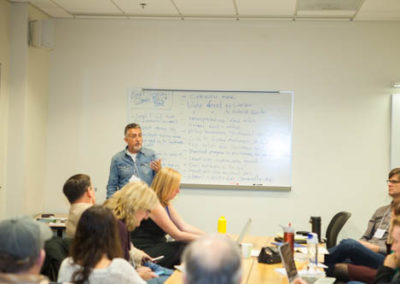
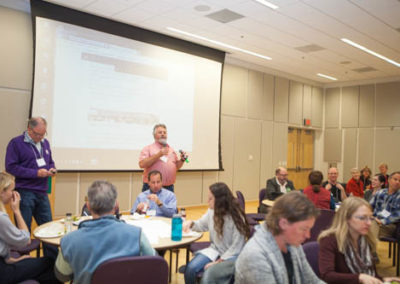
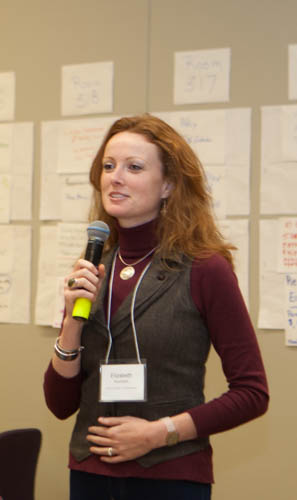
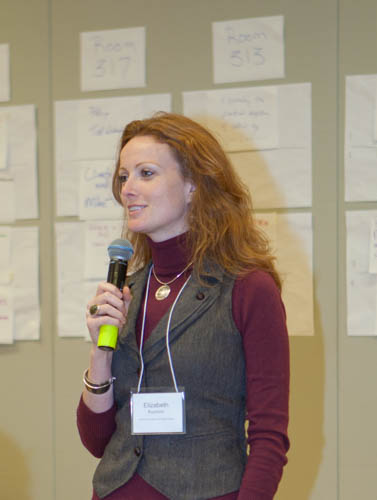
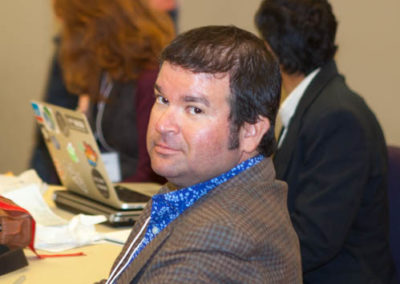
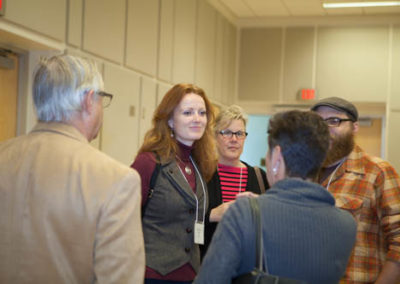

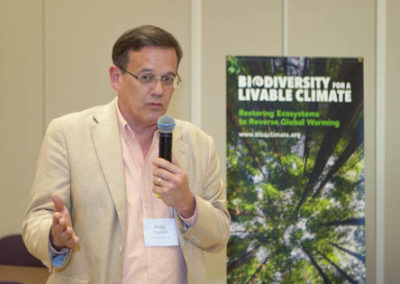
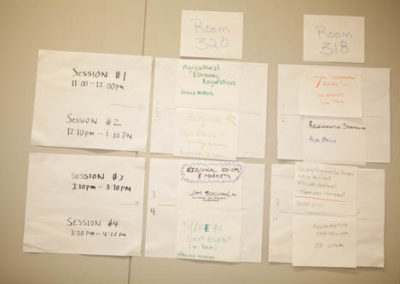
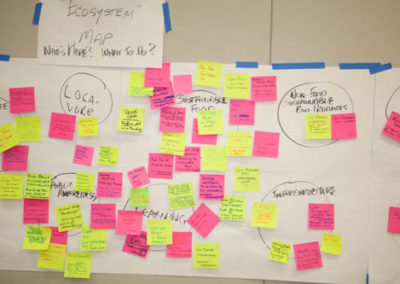
Recent Comments